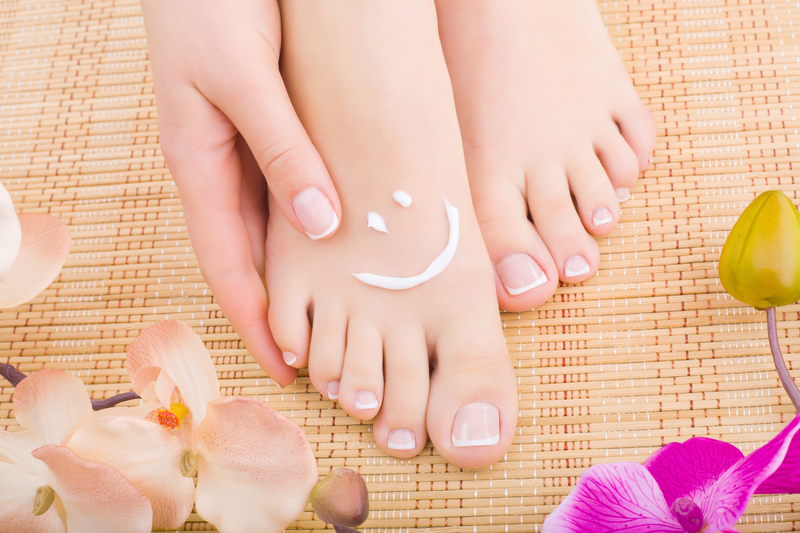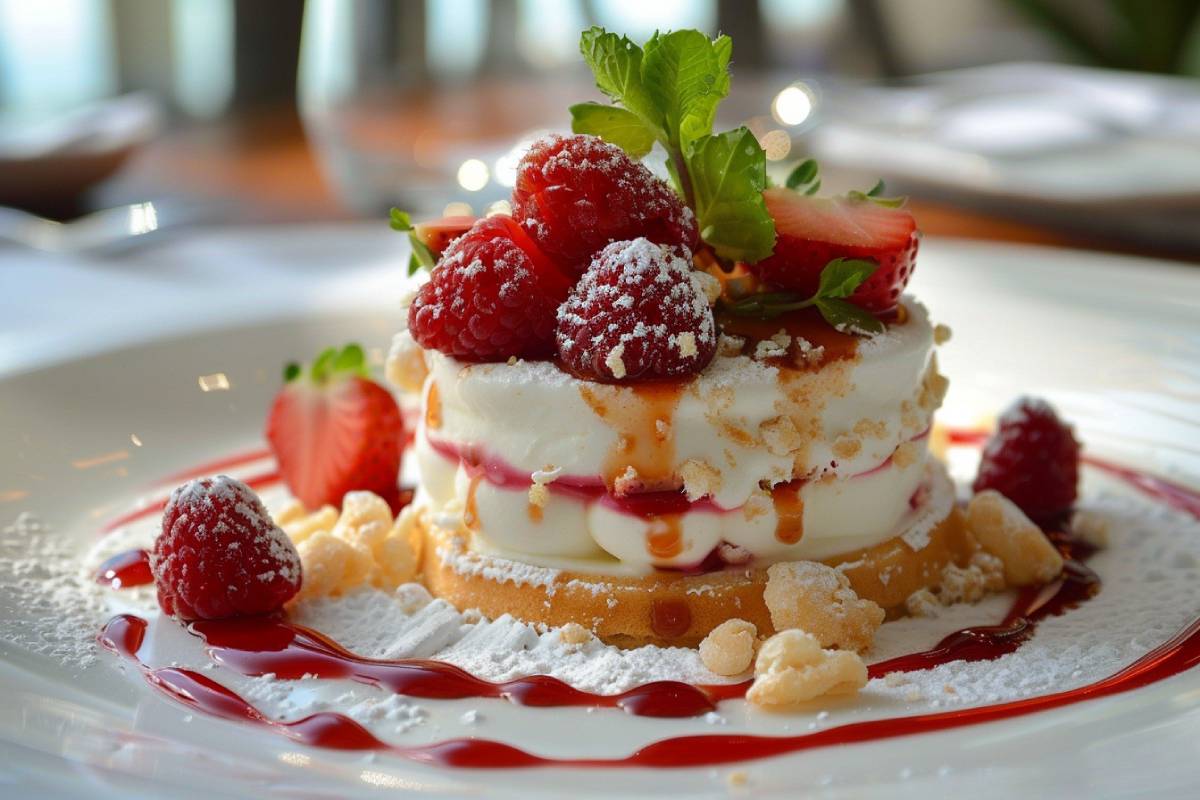Many people report having cold in their extremities, even though the rest of the body may be within the normal temperature. The reason people tend to get cold, specifically in the extremities, is that due to their distance from the heart, they can be the first parts of the body to be affected by poor blood circulation and dysfunctions in the autonomic nervous system. There are some acupressure points for cold hands and feet that are broadly used in countries with a high incidence of this health condition, such as Korea, where people have a tendency to have this health condition.
The hands and the feet are crucial for thermoregulation. They are coated in the so-called glabrous skin, the hair-free tissue in the palms of the hands and soles of the feet. This glabrous skin is innerved by many specialized nerves that are involved in the thermoregulation of the entire body. To feel cold in the extremities means that your body is trying to maintain body temperature. To always feel cold in the hands and feet, however, is a pathological sign.
In classical Chinese medicine, constant cold hands and feet are a major sign of a Yang deficiency of the Spleen. This syndrome can come from different etiological mechanisms, such as constitutional debility and inappropriate dietary habits. Whereas there isn’t just one cause of these symptoms, the treatment in Chinese medicine always involves using acupuncture for poor circulation and to increase the Yang in the body.
Why Do I have Cold Hands And Feet?
If you’re asking yourself this question, this is a really good sign. Feeling cold in the extremities can be a sign of disease. If you suspect that, in your case it might be a symptom of a severe health condition that can compromise your vital organs, such as diabetes, lupus, or anemia, you should consult with your doctor.
Other contributing factors for the constant sensation of cold in the hands and feet are:
- Irregular a low-quality diet
- Poor sleeping habits
- Stress maintained over a long periods
- Excessive intellectual activity
- Lack of physical exercises
As you can see, there isn’t only one cause for the lack of heat in the extremities. The best way to solve this is to regulate your basic life habits and stimulate your acupuncture for circulation in the feet and hands since it’s a non-invasive and side-effect-free treatment that you can do at home.
Can Acupuncture Help With Cold Hands?
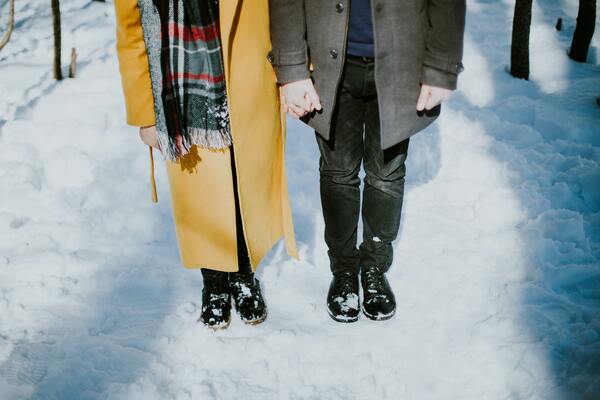
Based on experiential traditional approaches, the answer is yes. Not only can acupuncture help with the symptoms of cold in the extremities — It can help with the root cause of the problem. Although there is a lack of scientific technology that is able to translate traditional knowledge into a scientific algorithm, the use of acupressure points for cold hands and feet, phytotherapy, and other traditional therapies have been utilized in China and elsewhere in the East for thousands of years by the intellectual aristocracies that have helped to lay the foundations of civilization.
There are, nonetheless, some reports coming from the scientific community, such as this single subject design, where children who received treatment with acupuncture for cold in the extremities showed an improvement in their symptoms, except for one participant. It’s important to note that in TCM the rule of “one treatment fits all” never applies. Even if some individuals show the manifestation of the same symptoms, the treatment they’ll receive will not be identical.
The acupressure points for blood circulation in the hands and feet will vary according to each individual. In any case, these acupressure points for cold hands and feet are general points that anyone can use to improve blood circulation and raise Yang Qi in the body.
Acupressure Points For Cold Hands And Feet
Acupressure points for blood circulation in the hands
Acupoint: M-UE-9 (Other Names: Ba Xie/Eight Evils)
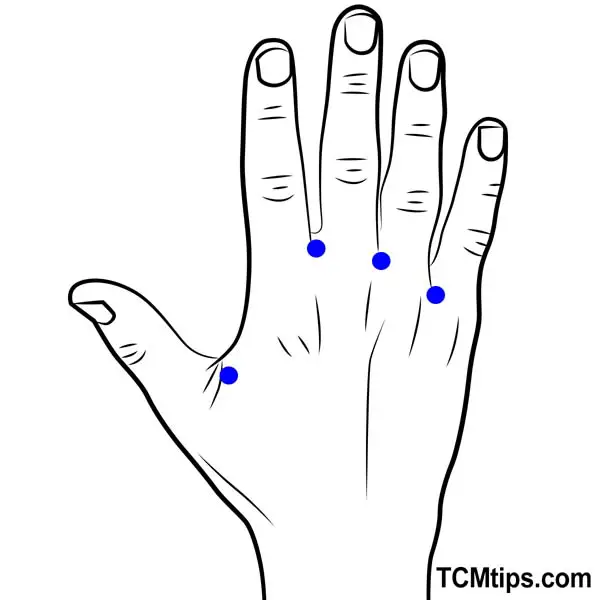
It’s located on the dorsum of the hand, on the webs between the five fingers of both hands.
To stimulate M-UE-9, place your hands on a flat surface and use the other hand to apply a firm friction on all four points of the hand except the thumbs all at once. Do it for three to six sessions of one minute each.
Baxie, as this acupoint is also called, regulates the autonomic nervous system, promotes blood flow, and warms the limbs. The stimulation of M-UE-9 is also beneficial in reducing inflammation and swelling. It is also one of the acupressure points for congestive heart failure.
Acupoint: LI-4 (Other Names: Large Intestine-4/He Gu/Joining Valley)

This acupoint is also known as Hegu. It is one of the most famous and commonly used acupuncture points for its analgesic power, it’s used in a variety of cases for this purpose, such as in acupuncture for hand pain.
If you make a “C” shape with both hands, they should easily interlock. The thumb of one hand should fall onto the area of skin between the thumb and index finger of the other hand. This space holds the LI-4 point. Its exact location is closer to the midpoint of the index finger metacarpal bone.
There are really many uses for this acupoint, but the most relevant in acupuncture for poor circulation is that it causes peripheral dilation, besides being a local point which to work with.
You can massage LI-4 using your thumb. Make sure to apply enough pressure so as to feel a little of a sharp sensation typical of this point. The stimulation of LI-4 (Hegu) is counter-indicated for pregnant women as it can induce childbirth.
Acupoint: LI-11 (Other Names: Large Intestine-11/Qu Chi/Pool at the Crook)
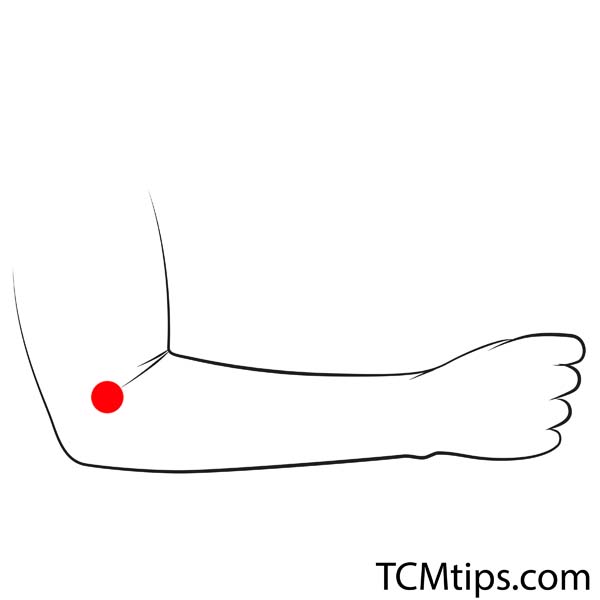
You can find LI-11 by flexing your arm and looking for the crease immediately on the outside of your elbow.
Quchi, as this acupoint is also named, invigorates the Blood and promotes Qi and Blood flow. Stimulate the acupoints of your hands and arms to promote blood flow throughout your body and warm your body from your hands. It also improves stiffness around the arms and shoulders. Use it for care during desk work and the like. It’s an acupoint used in acupressure for inflammation.
You can apply Tuina massage in this acupoint if you really want to excel in your acupressure treatment. The movement you can use is Tan Jin Fa. By means of a pincer movement between the thumb and the rest of the fingers, squeeze the muscle with strong traction, then release the tissues to snap back into position quickly. The wrist must remain relaxed during the movement. Do this movement on an organic loop for about three minutes on each side, then repeat it two or three times.
Acupuncture for circulation in the feet
Acupoint: M-LE-8 (Other Names: Ba Feng/Eight Winds)
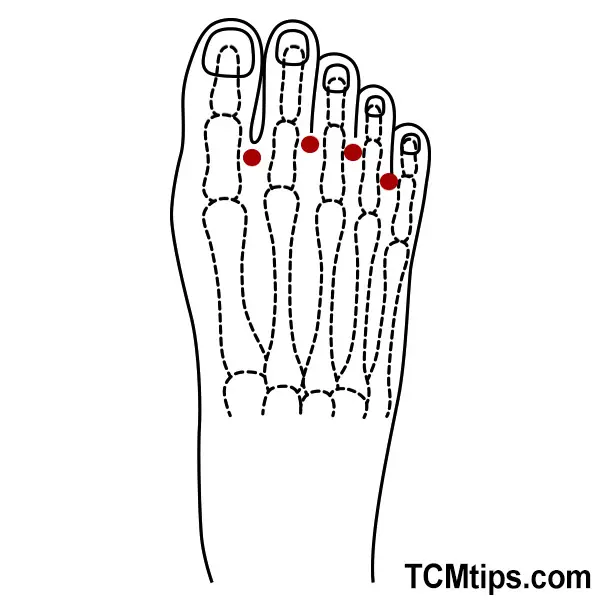
The acupuncture points between the bases of the toes and little fingers called “Eight wind” are also effective for cooling not only the feet but also the entire body. Between each base from the big toe to the little finger, both on the instep and the sole of the foot. There are a total of eight on the left and right, so it is called “Eight wind”.
To stimulate it, pinch your feet up and down and press hard, just as you would pinch the acupoints with your thumb and forefinger. Pull it toward your fingertips and then release it. Do it about 10 times per place.
You can also stimulate all “Eight wind” at once by inserting the fingers of your hand from the sole of your foot between each finger and turning it around your ankle.
This is a local point that invigorates the Blood and is one of the pressure points to improve blood circulation in the feet. You can also use it if you notice cold feet after acupuncture treatment.
Acupoint: SP-6 (Other Names: Spleen-6/San Yin Jiao/Three Yin Intersection)
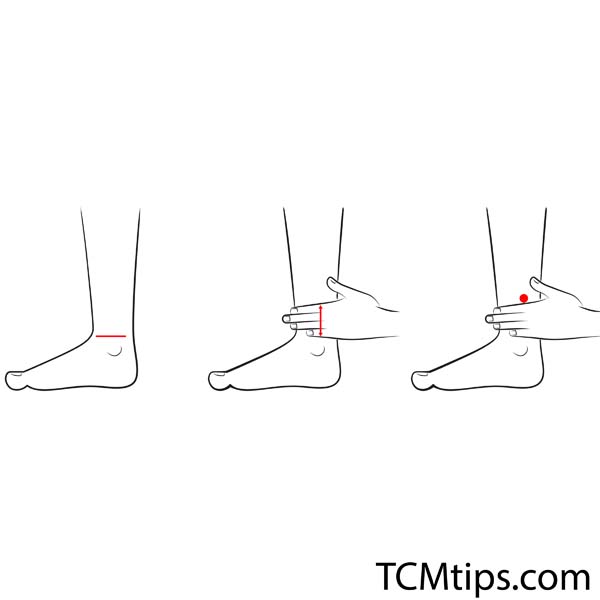
SP-6, Sanyinjiao, is one of the most utilized acupoints. It’s a single point of the Spleen meridian where two other Yin meridians related to the production of blood cross: the Kidney meridian and the Liver meridian.
San Yin Jiao is found on the lower leg, three cun above the medial malleolus, and on the posterior border of the tibia.

This is the point by excellence that stimulates blood production as well as blood circulation. If you’re suffering from circulatory problems, you should definitely use this acupoint unless you’re pregnant since this point can induce labor. It’s even used in acupuncture for eye bags.
To stimulate SP-6, sit on a chair and use your fingers to massage it with circular movements and gradual depth intensity. Do this for about three minutes on both sides. SP-6 is also one of the local acupressure points for blood circulation on the legs.
Acupoint: GV-4 (Other Names: The Governing Vessel-4/Ming Men/Life Gate)

GV-4 is located on the spine, level with the lower border of L-3. This is the point where to strengthen the source of Yang for the whole body, which in Chinese medicine is located in the Kidneys.
In TCM clinics around the world, doctors and acupuncturists utilize moxibustion on this acupoint in order to produce an enhanced effect. If you do not have a moxibustion kit in your house, you can use a warm bag with a similar effect. Just place it in the spot where GV-4 is located and rest for 15 minutes while it warms the point.
GV-4 is one of the best acupressure points for scoliosis.
 P. Sze
P. Sze 